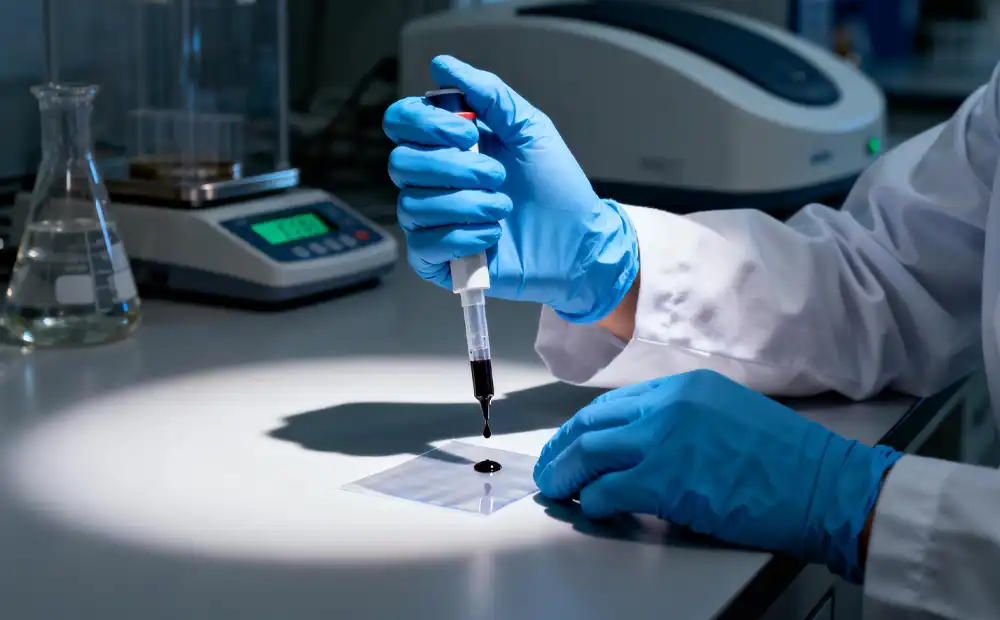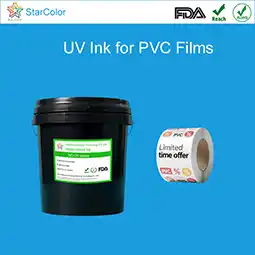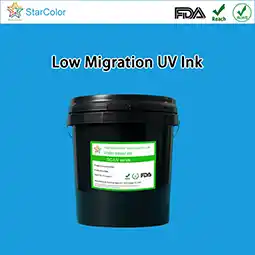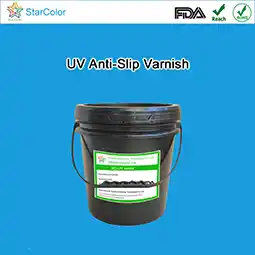Analysis of Migration Testing Methods for UV Printing Inks
Date: Oct 15 2025 From: Star Color Views:
UV printing inks are widely used in sensitive fields such as food and pharmaceutical packaging due to their high curing efficiency and low VOC emissions. However, components such as photoinitiators and residual monomers in these inks may migrate into packaging materials, posing potential safety risks. Therefore, accurate migration testing has become the core process for ensuring compliance of low-migration UV inks. Currently, the industry has established a detection system based on migration simulation tests, combined with gas chromatography–mass spectrometry (GC–MS) and solid-phase microextraction (SPME) technologies.
Core Standard Systems for Migration Testing
The standardization of migration testing relies on authoritative regulatory frameworks. Different regions have formulated stringent limit values and operational procedures for UV ink migration, forming the basis of analytical work.
The EU Regulation (EU) No 10/2011 serves as the global benchmark for migration testing of food-contact materials. It stipulates that the total migration of photoinitiators (e.g., benzophenone (BP), 4-methylbenzophenone (4-MBP)) in UV inks must not exceed 0.6 mg/kg, and the migration level of ITX should be ≤ 0.05 mg/kg.
The U.S. FDA 21 CFR 175.300 standard provides detailed requirements for migration test simulations under acidic, oily, and aqueous food conditions.
China’s newly implemented GB 4806.14–2023 “Inks for Food Contact Materials and Articles” further refines physical and chemical index limits: total migration ≤ 10 mg/dm² (≤ 60 mg/kg for infant-use products); heavy metal migration ≤ 1 mg/kg; total aromatic primary amines ≤ 0.01 mg/kg. All these standards require migration testing to simulate actual use conditions and to combine simulation experiments with instrumental analysis, ensuring the accuracy and practicality of results.

Key Testing Technologies and Analytical Procedures
Testing of low-migration UV inks typically follows three major steps: migration simulation → sample pretreatment → instrumental analysis. Among these, the combined use of SPME and GC–MS is central to precise detection.
1. Migration Simulation – Reproducing Real-Use Scenarios
Migration simulation is a critical preliminary step that reproduces actual usage conditions. The selection of food simulants and testing conditions depends on ink application scenarios. Common simulants include distilled water, 3% acetic acid, 10% ethanol, and olive oil. Test temperature and duration should correspond to actual environments—for example: 4 °C for cold storage, 45 °C or higher for hot-fill packaging. Migration time is typically 120 minutes, extendable to 24 hours for specific cases.
According to DIN EN 14338 (Germany), Tenax absorbent can be used as a solid food simulant to determine migration through adsorption–desorption analysis, a method widely applied in cardboard packaging ink testing. After simulation, the extract is filtered and concentrated for instrumental analysis.
2. Solid-Phase Microextraction (SPME) – Efficient Enrichment of Trace Migrants
SPME, a solvent-free and high-efficiency pretreatment technique, has become the preferred method for detecting volatile migrants in UV inks. It uses a coated fiber to adsorb target compounds from the simulant, followed by direct injection into the analytical instrument, integrating sampling, extraction, and injection. For UV ink photoinitiator testing, three parameters are critical: fiber type, extraction temperature (BP recovery rate at 45 °C is 3× higher than at 4 °C), and extraction time (typically 40–60 minutes).
3. Gas Chromatography–Mass Spectrometry (GC–MS) – Accurate Qualitative and Quantitative Analysis
GC–MS is considered the gold standard for detecting volatile and semi-volatile organic migrants (e.g., photoinitiators and residual monomers). The chromatograph separates compounds, and the mass spectrometer identifies them by characteristic ion fragments, referencing the NIST database for qualitative analysis and using internal/external standards for quantification. Typical parameters: ion source: electron ionization (EI); mass range: 40–400 Da. This method achieves detection limits as low as 0.0012 µg/L for BP and 0.0040 µg/L for 4-MBP, with correlation coefficients ≥ 0.99 and recovery rates of 75.1%–95.6%, fully meeting regulatory precision requirements.
4. Other Complementary Techniques
High-Performance Liquid Chromatography (HPLC) is used for thermally unstable or highly polar migrants and is specified in GB 4806.14–2023 for total aromatic amine testing. Inductively Coupled Plasma–Mass Spectrometry (ICP–MS) specializes in heavy metal migration detection (Pb, Cd, As, etc.) with ppb-level sensitivity, meeting the ≤ 1 mg/kg regulatory limit.
Practical Applications of Testing Techniques
In one food packaging UV ink testing project, SPME–GC–MS was used with 10% ethanol simulant at 45 °C. Results showed BP migration of 0.36 µg/L and 4-MBP migration of 0.21 µg/L, both far below the EU 0.6 mg/kg limit.
For infant food packaging inks, additional ICP–MS analysis for heavy metals was performed. By optimizing the ink formulation, Pb migration was reduced to 0.12 mg/kg (only 12% of the standard limit). HPLC tests confirmed no aromatic amines detected, ensuring full FDA compliance.
Conclusion
Migration testing of UV printing inks serves as a vital safeguard for food and pharmaceutical safety. Its analytical framework, centered on SPME–GC–MS, combined with HPLC and ICP–MS, enables comprehensive detection from volatile organics to heavy metals. The implementation of standards such as EU 10/2011 and GB 4806.14–2023 provides clear compliance guidance. As low-migration UV ink technologies advance, testing methods continue to evolve toward higher sensitivity, faster analysis, and greater environmental compatibility. Mastering standardized migration detection is not only essential for ink manufacturers to meet market access requirements, but also the cornerstone of ensuring end-product safety.
 RU
RU EN
EN CN
CN















